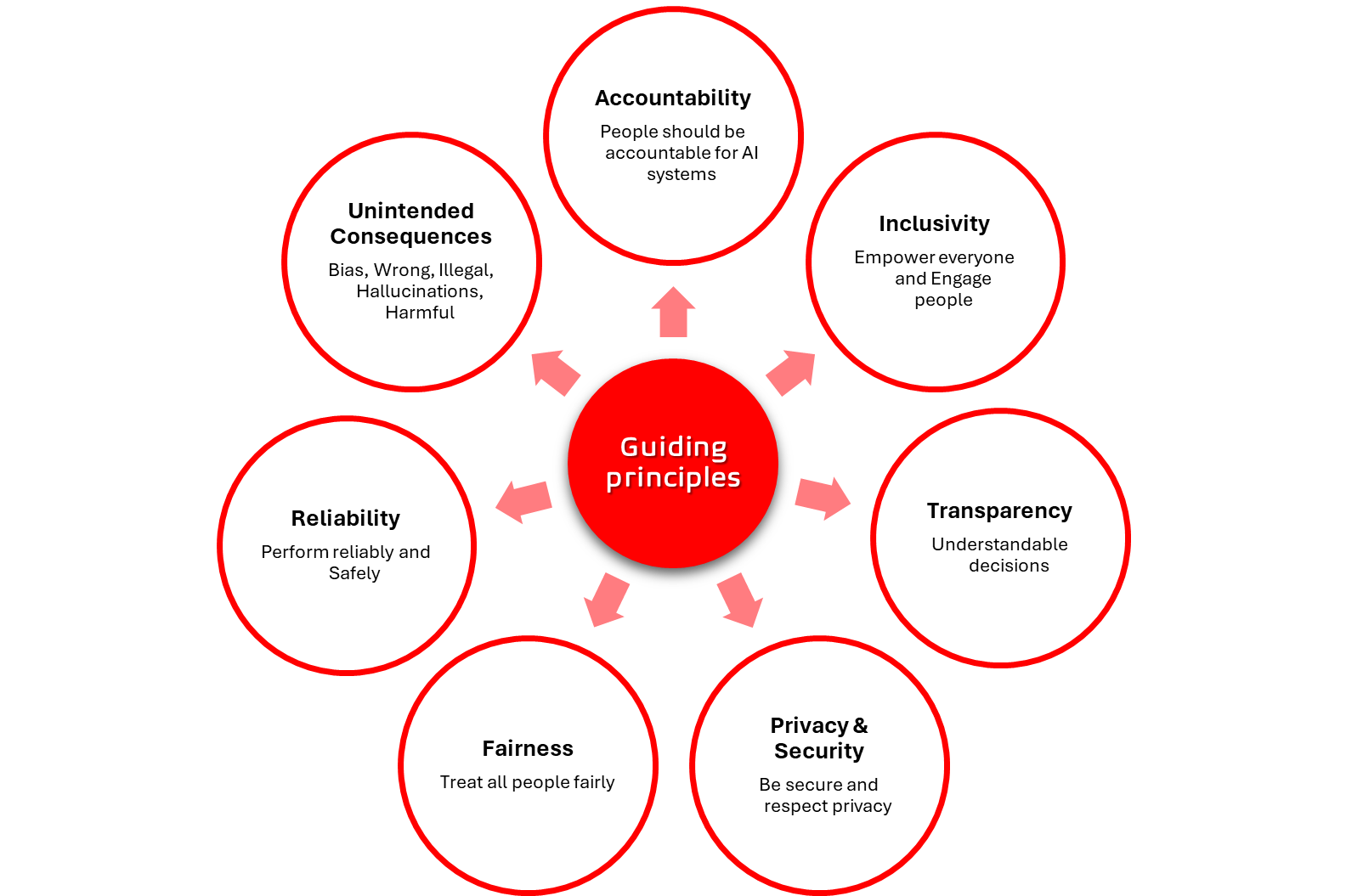These are my living personal study notes. Use them at your own risk!

Examples
Here are a few examples of solutions that adhere to guiding principles:
- Accountability - Solutions designed to conform to governance frameworks and organizational standards, ensuring compliance with established legal and ethical principles.
- Inclusivity - Solutions created to support individuals who are visually impaired or blind.
- Transparency - Share details on a solution's features, possibilities, and constraints. People understand how to use the AI solution.
- Privacy & Security - Solutions that safeguard user data while still gathering valuable insights for enhancing services.
- Fairness - Solutions that yield the same outcomes for individuals residing in both urban and rural areas, gender, race, or other bias.
- Reliability & Safety - Solutions designed to include resistance to harmful manipulation.
- Unintended Consequences - Solutions designed to identify and reduce the spread of harmful content, such as misinformation, hate speech, and fake news on its platform.
Help around the corner
- Microsoft's AI Fairness Checklist encourages engineers to evaluate bias risks throughout every phase of the model lifecycle.
- Microsoft’s Seeing AI solution helps visually impaired people by describing their surroundings, recognizing people, and reading text aloud, promoting inclusivity and access to technology for everyone.
- Microsoft's AI for Earth uses AI to address environmental challenges, from climate change to biodiversity loss, ensuring AI contributes positively to the planet’s sustainability.
FRAUPIT
Not ideal, but I use the FRAUPIT catch phrase to remember: Fairness, Reliability & Safety, Accountability, Unintended Consequences, Privacy & Security, Inclusivity, and Transparency.
You perused:
- this->guiding-principles
Enjoy other learning notes:
- bots
- common-machine-learning-types
- common-workloads
- generative-ai
- natural-language-processing
- vision-workloads
AI-900 Quick reference Poster:
